A prova di scemo
By Antonella Soldaini
One can consider Pattini a rotelle the artist’s first work that reveals a clear relationship with the concept of man’s measure. The absence of a pedestal in the work as a whole, the consequent placement of the work on the ground are elements that suggest a different approach to the concept of sculpture and highlight the desire to create a work that stands in opposition to the notion of traditional sculpture.
Ready to move in space and to constantly change state, Pattini a rotelle, characterized by a subtle sense of irony, convey a feeling of rebellion against the idea of definitive placement. It is a work that draws attention to the possibility of movement, which in this case becomes a metaphor for change.
Skates become ideal pedestals for the man who, once climbed on them, finds himself in a new position: a higher one that allows him to have a different look, to change his knowledge of the horizon. The measurement number stamped on the plates defines a clear relationship with the public. Moreover, the fact that we cannot avoid imagining the figure of the skater above them causes the work to enter into a dialogue with the observer. The void that is perceived where the skater could have been prescribes a gap to be filled: once he has identified his own size, the observer wants to be part of it, he intervenes carelessly on the work, literally placing himself on it, thus giving it a new form. There is then only one alternative, the inevitable destruction of the work: the development of a new work capable of being continuously subjected to verification and action by the user.
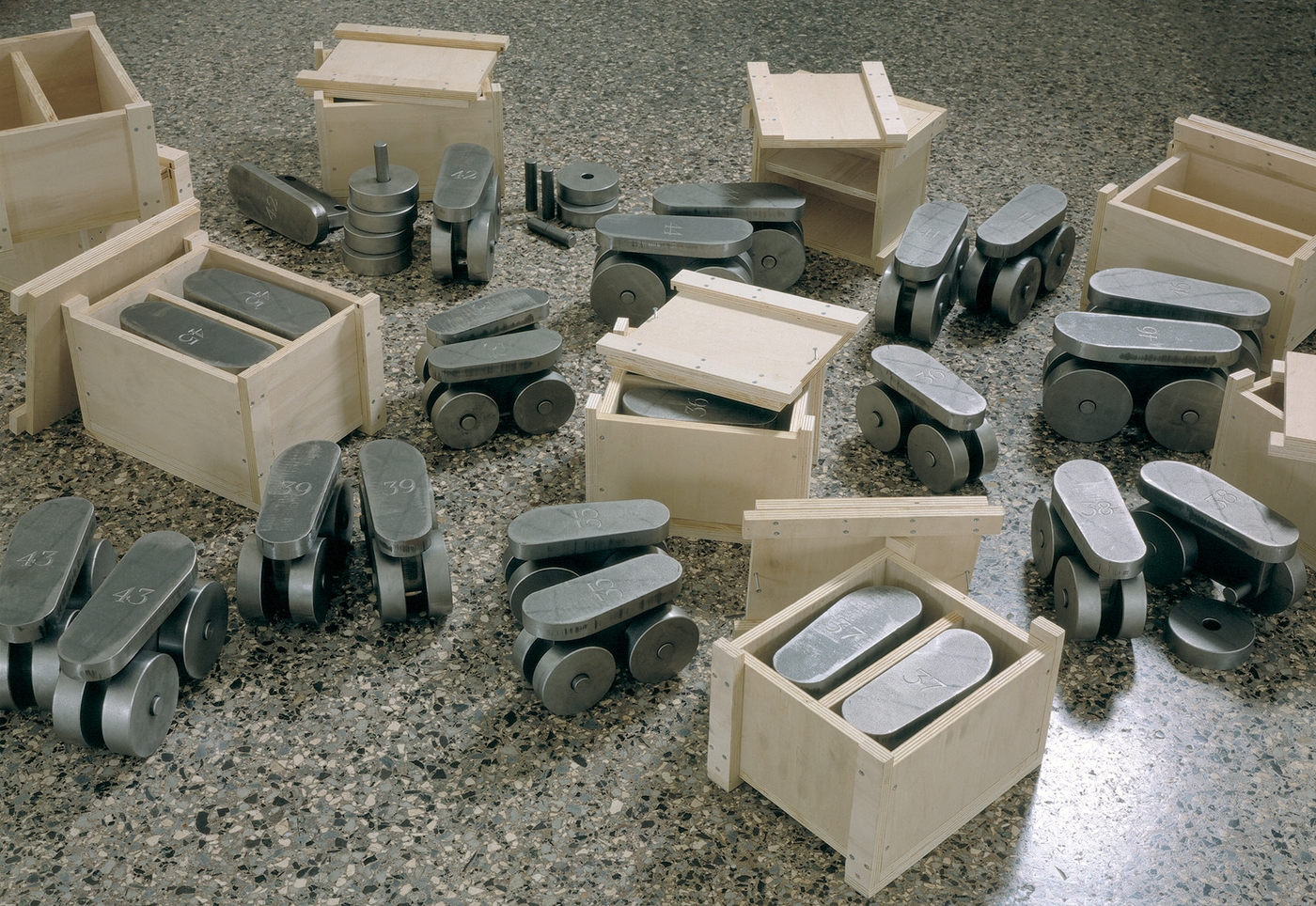
Installation at Salvatore Galliani Gallery, Genova 1995
Photo © Antonio ManiscalcoA prova di scemo
By Antonella Soldaini
One can consider Pattini a rotelle the artist’s first work that reveals a clear relationship with the concept of man’s measure. The absence of a pedestal in the work as a whole, the consequent placement of the work on the ground are elements that suggest a different approach to the concept of sculpture and highlight the desire to create a work that stands in opposition to the notion of traditional sculpture.
Ready to move in space and to constantly change state, Pattini a rotelle, characterized by a subtle sense of irony, convey a feeling of rebellion against the idea of definitive placement. It is a work that draws attention to the possibility of movement, which in this case becomes a metaphor for change.
Skates become ideal pedestals for the man who, once climbed on them, finds himself in a new position: a higher one that allows him to have a different look, to change his knowledge of the horizon. The measurement number stamped on the plates defines a clear relationship with the public. Moreover, the fact that we cannot avoid imagining the figure of the skater above them causes the work to enter into a dialogue with the observer. The void that is perceived where the skater could have been prescribes a gap to be filled: once he has identified his own size, the observer wants to be part of it, he intervenes carelessly on the work, literally placing himself on it, thus giving it a new form. There is then only one alternative, the inevitable destruction of the work: the development of a new work capable of being continuously subjected to verification and action by the user.

Correspondence table of the 13 specimens
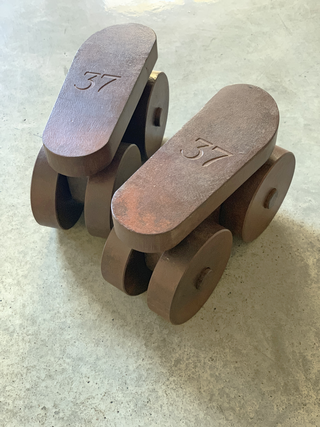
Nº37 Courtesy Lara e Rino Costra Arte Contemporanea
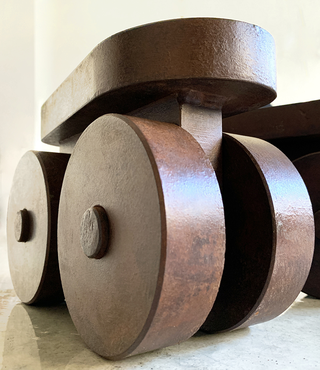
Detail of the right element of nº37
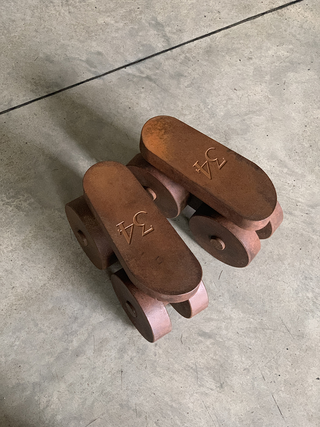
Nº34 Courtesy Lara e Rino Costra Arte Contemporanea
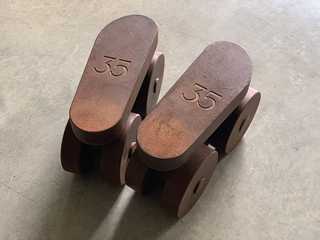
Nº35 Courtesy Lara e Rino Costra Arte Contemporanea
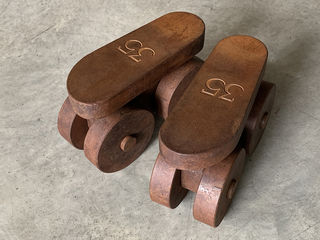
Nº35 Courtesy Lara e Rino Costra Arte Contemporanea
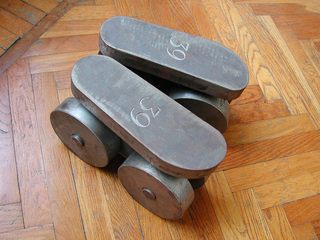
Nº39 Private collection, Milan
Social
Contatti
umberto@cavenago.info